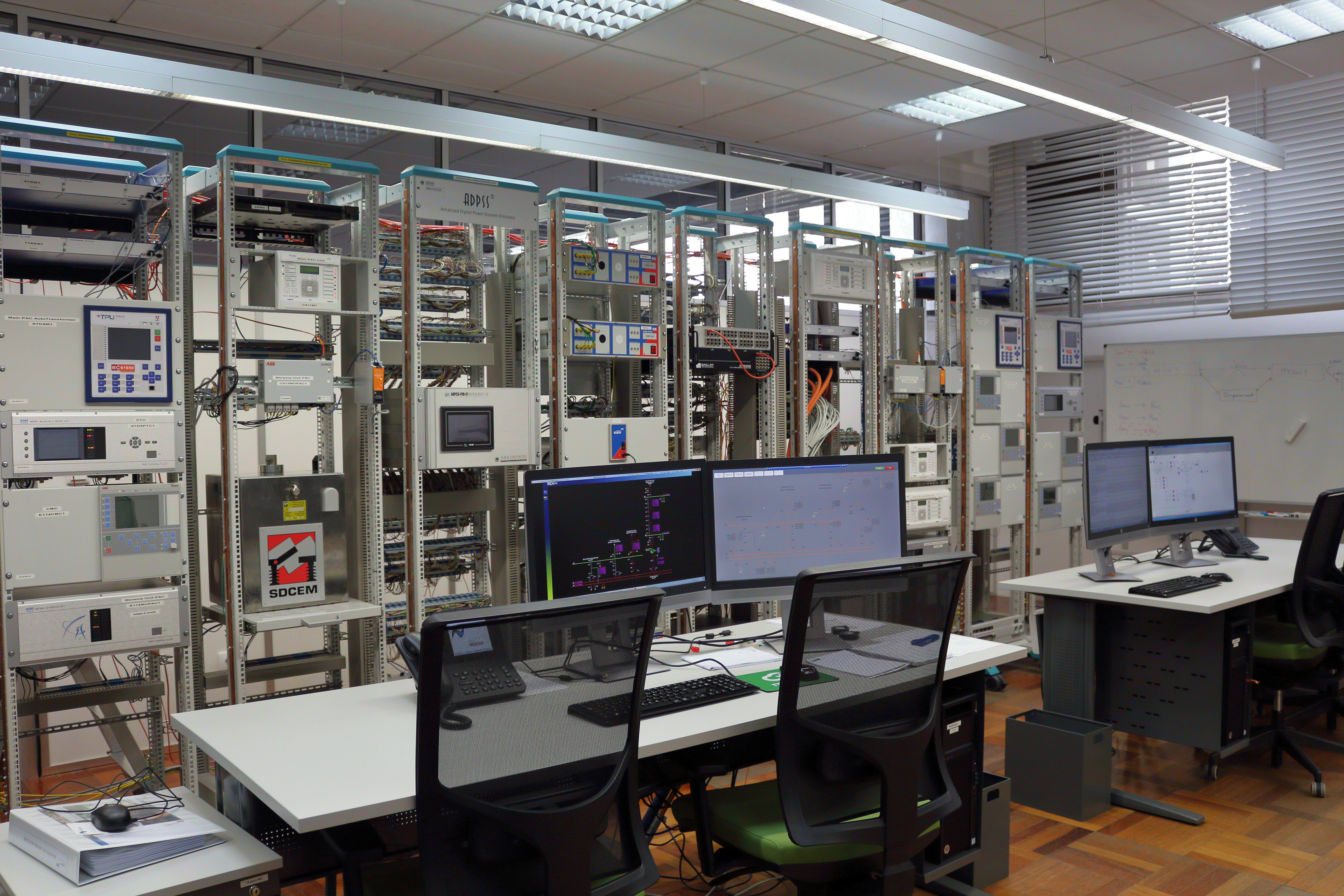Description: R&D Nester (Centro de Investigação em Energia REN – State Grid, S.A.) is a research centre created through the partnership between REN (Redes Energéticas Nacionais), the Portuguese TSO, and State Grid Corporation of China, the Chinese TSO and DSO.
As an energy research centre, R&D Nester’s mission is to provide an international platform for knowledge, delivering innovative solutions to be applied into energy systems; providing new tools, strategies and processes, well-tuned to the new energy paradigm, serving as a driving force towards more efficient and sustainable energy systems.
R&D Nester main areas of research and expertise include: renewable energy management; smart grid technologies; power systems and communication systems simulation; power networks planning; power systems operation; energy markets and economics.
Facilities:
R&D Nester Real Time Power Systems Simulation Laboratory
Description: R&D Nester Real Time Power Systems Simulation Laboratory was designed to enable the simulation and testing of both power systems and communication networks, either in a stand-alone mode or by performing co-simulation.
The major assets of the laboratory include Real Time Power Systems Simulators for power systems simulation and Hardware-in-the-Loop testing of physical devices. Besides, other relevant equipment existing in the laboratory includes:
- Communication networks simulator and testing tools
- IEC 61850 specification, configuration and testing tools/equipment
- Time synchronization servers
- Power amplifiers
The communication infrastructure of the laboratory allows optical fibre and Ethernet connections, bringing great flexibility and allowing the test of devices such as IEDs or PMUs with great simplicity in a plug-and-play environment. Other existing communication network devices are state of the art (e.g. routers, switches), ensuring accurate testing of a wide range of communication protocols.
The laboratory is in operation since 2016 and is installed in two separate rooms (computation and testing rooms), with a total area of 95m². Devices requiring strict cooling conditions and those noisy ones are placed in the computation room, which is equipped with air conditioning and is acoustically isolated from the testing room. It is currently run by 10 employees.
Static Equipment
Power Systems Simulation and Testing
Description:
- OPAL-RT OP5600 Real-Time Digital Simulator: A 32-core computer for real-time power systems simulation, enabling Hardware-in-the-Loop (HIL) testing of real devices (e.g. IEDs or PMUs). A set of digital and analogue IOs is available to connect multiple devices to the simulation environment (16 Analogue Outputs; 64 Digital Inputs; 64 Digital Outputs). The simulator is IEC 61850 aware allowing the interaction with devices through its Ethernet interfaces using GOOSE and Sampled Measured Values.
- CEPRI Advanced Digital Power System Simulator (ADPSS) – A digital power system simulator with HIL capability, designed for simulation and testing of large-scale complex AC/DC power systems. Its computing clusters (60 cores) allow high performance real-time simulation and a physical interface box makes accessible a large number of IOs (48 Analogue Outputs; 160 Digital Inputs; 160 Digital Outputs) for equipment testing. Ethernet interfaces are also available permitting IEC 61850 communication to, among other, perform HIL using IEC 61850 standard.
|
Communication Networks Simulation and Testing
Description:
- IXIA Gigabit Ethernet XMVDC LSM: A communication network traffic generator for increasing loading levels and assess network performance under such conditions.
- IXIA ImpairNet: A communication network impairment device to weaken the operating conditions of the network, namely through the introduction of package drops, jitter or delays.
- IXIA Anue 3500: A device to measure the performance of communication networks, namely related to Precision Time Protocol (PTP / IEEE 1588), allowing different packet analysis and the assessment of network characteristics (e.g. jitter).
|
IEC 61850 Specification, Configuration and Testing
Description:
- OMICRON CMC 850 – A device aimed at generating IEC 61850 GOOSE and Sampled Measured Values messages to be injected into the communication network to the devices under test, thus allowing the performance of IED’s open loop testing. It also generates current and voltage signals to be directly applied to IEDs so that functional testing of IEDs can be performed.
- OMICRON ISIO 200 – A binary input/output terminal with IEC 61850 GOOSE interface, allowing the conversion of GOOSE messages to binary signals for direct connection to specific IEDs.
|
Other
Description:
- OMICRON CSM 156 Power Amplifiers – 4 x 3-phase low power amplifiers with the ability to work as voltage or current amplifier in a 3-phase, single-phase or DC configuration.
- Meinberg LAN TIME M3000 – Redundant time synchronization servers for synchronization of the different devices in the laboratory, with different time synchronization outputs: PTP, IRIG-B and SNTP.
|


